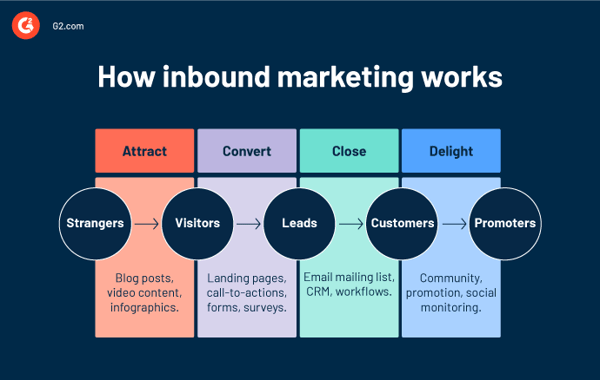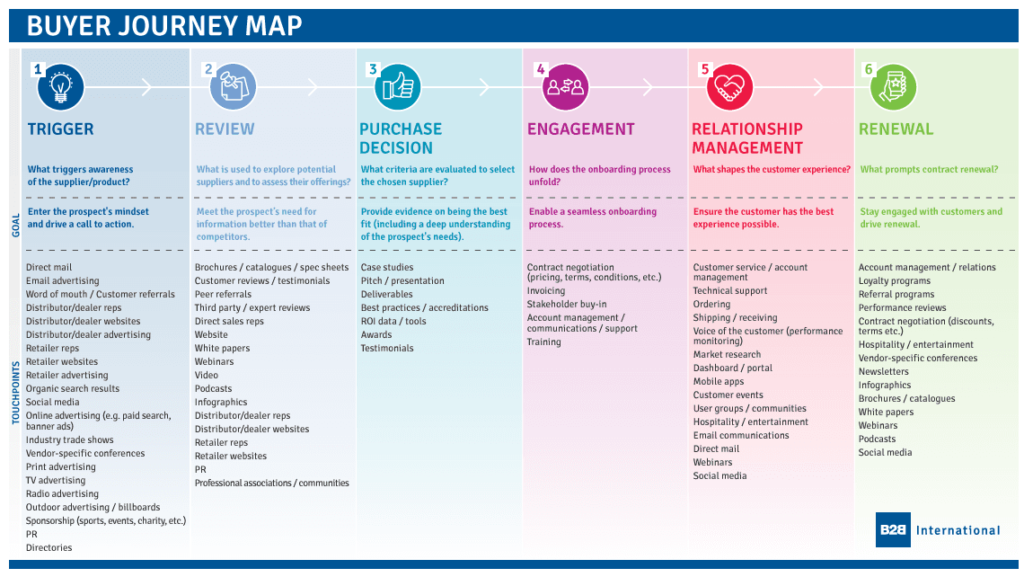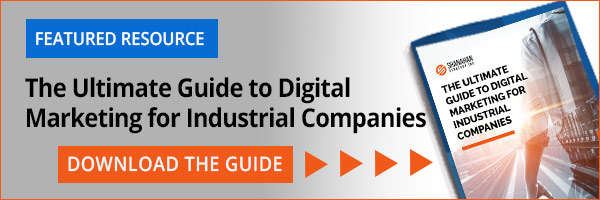Gone are the days of heading to the town square with a megaphone and yelling at people as they attempt to duck past you. Modern marketing requires a subtler touch. Today’s B2B buyers expect more from the companies they buy from, and for a good reason: inbound marketing for manufacturers is everywhere.
Inbound marketing scratches an itch that buyers didn’t know they had. It can entertain, educate, and convert all at once. However, it can be a time-consuming strategy with unexpected hurdles.
For those manufacturers looking for an introduction to inbound marketing, we’ve created this handbook to get you started providing value and earning B2B buyer trust that will lead to conversions.
Key Takeaways:
- Inbound marketing is about providing value upfront in exchange for buyer attention that leads to conversions.
- Manufacturers need inbound marketing to earn the trust of skeptical B2B buyers making big purchases.
- Shanahan can help you form an effective strategy and boost your ROI.
What Is Inbound Marketing?
Inbound marketing is a marketing strategy that brings buyers to you so you can pitch your solution organically. The best way to do this is by providing something valuable in return for their attention.

The most popular examples of inbound marketing include:
- Blogs
- Social media
- eBooks
- Videos
- Podcasts
The best inbound marketing feels more like a conversation than a sales pitch. It can quickly build authority for the marketer and allow the buyer to trust their solution more easily.
Why Manufacturers Need Inbound Marketing
A serious amount of trust is needed before deals can get done in B2B transactions. Design engineers and procurement officers aren’t spending a few hundred dollars on an impulse buy at the mall – they’re making choices that will affect the future of their company.
The B2B Buyer Journey
The process of gaining buyer trust can be thought of as a journey that begins with the buyer becoming aware of your solution and ends with them deciding it’s right for their business.

From the moment the buyer becomes aware of your services, they need to perceive:
- Your authority and expertise.
- The authenticity and reliability of your solution.
- Your commitment to their needs and their best interests.
Inbound marketing for manufacturers is necessary for the buyer journey because it addresses questions in ways that establish you as a reliable source of information. Done correctly, your inbound marketing content will be ready for B2B buyers at every stage of the journey.
Reaching B2B buyers at every stage of the journey also means creating omnichannel content. B2B buyers use up to 10 channels during their journeys. Ensure your content is accessible through your buyer’s preferred means.
Inbound Marketing Tips for Manufacturers
Here are four tips that will help convert those prospects into B2B buyers.
1. Use Buyer Personas
The best way to provide value to someone is to directly address the things that are important to them. How can you know what your buyers will care about before you meet them? By using buyer personas.
Here are a few tips when creating buyer personas for your manufacturing company:
- Gain inspiration from past buyers as well as those you hope to target in the future.
- Don’t just document what they want from a business perspective. Learn about their personal life and career goals as well.
- Your inbound marketing strategy should be designed to satisfy your buyer personas, so make them as realistic as possible.
2. Use SEO and Keyword Research When Crafting Content
You’re most likely to convert an MRO or supply-chain manager if you directly address their questions about a specific issue. They’ll also need to be able to find your solution easily. To do this, you’ll need a robust SEO strategy and comprehensive keyword research.
There are a ton of useful SEO keyword trackers online to help you identify what buyers are searching for. Examples include Ahrefs, Semrush, and Google Keyword Planner.
Use these tools to research the most popular keywords and phrases in your industry. Create content based on these, including:
- Guides on how to solve common industry problems (especially those for which your solution provides a shortcut).
- Whitepapers explaining cutting-edge concepts or technologies.
- Introductions to related concerns.
You can also use keyword trackers to assess the performance of your content. This will give you insight into how to shape your next content strategy.
Bonus Tip: To hack your website’s growth, research your competitor’s highest-performing content and attempt to improve it.
3. Optimize Your Website
Make sure your website is well-organized and easy to navigate. Check to make sure every page loads quickly. A slow, clunky website will kill the user experience and drive buyers away.
- Check your website’s performance using tools like Google Search Console’s Core Web Vitals.
- Include a contextual call to action (CTA) on every page.
- Keep lead capture forms short. Request only necessary information.
- Only use high-quality media.
- Use Google’s free tool to ensure your site is mobile-friendly.
Check out this video by Neil Patel for more details on optimizing your website.
Source: Neil Patel on YouTube
4. Use Social Media
Social media algorithms tend to favor brief and easily digestible content. They’re also perfect places to display your company’s personality through relatable, authentic content.
Here are four tips for using social media as an inbound marketing tool for manufacturers:
- Break larger pieces of content into smaller ones and post them across multiple platforms. Your 5-minute YouTube video can be chopped up into a few 30-second highlights that make great Instagram reels.
- You’ll only gain followers by posting consistently. You don’t need fresh content every day but plan a schedule and stick to it.
- Give the people what they want. Research to find what people are talking about to generate content ideas.
- Share useful content from other creators. This will build relationships and provide value to your followers.
Shanahan Strategy Is Ready to Build Your Inbound Marketing Strategy
Inbound marketing for manufacturers is a long-term strategy that works best with patience and diligence. You won’t get results with a few one-off posts or sporadic blogs. You’ll need a comprehensive strategy and dedicated content production to get the job done.
Shanahan Strategy is ready to support you in executing a successful inbound marketing strategy for your manufacturing company. We can help you:
- Assess your current strategy and suggest improvements.
- Design and develop your website to maximize traffic.
- Craft powerful content strategies that will attract your ideal buyers and drive conversions.
Let’s talk about how Shanahan can help you get the most out of your next inbound marketing strategy.

